Emotional return for Zhou — will it be his only F1 visit? 2024 Chinese GP diary
Will Zhou Guanyu's first Chinese GP as an F1 driver also be his last? Chris Medland on an emotional homecoming. Plus, points galore, with a proposal to expand the points places and an unwelcome tally for Fernando Alonso
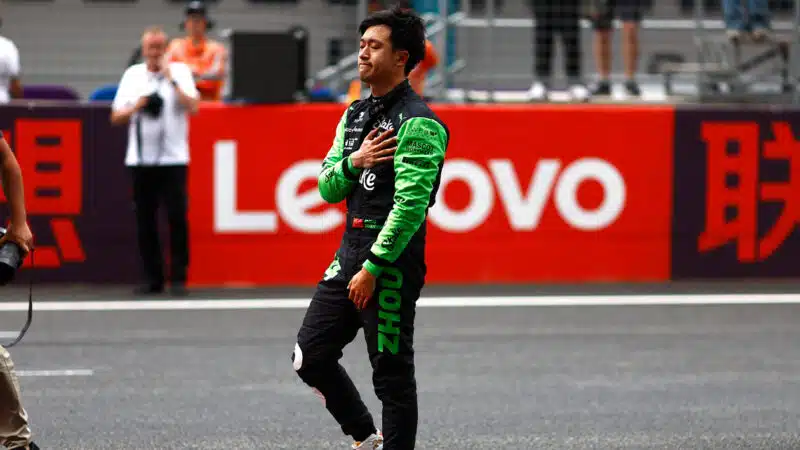
An emotional Zhou acknowledged the crowd at the end of the Chinese GP
Andy Hone/Sauber
From a short gap between races at Suzuka to a five-year one between visits to Shanghai, it was a step into the unknown for the teams in China. The Red Bull dominance continued, but there were plenty of storylines among the other teams on and off track.
The pros and cons of a sprint
Ask me to file this copy on Friday and I’d be joining the majority of the paddock in stating a sprint weekend is great. On a normal race weekend, the narrative would have been about how short-changed the fans will have been because FP2 saw hardly any running with rain hitting and teams opting against taking any risks when there is little to be learned.
Instead, with it being sprint qualifying at that time, we got a really exciting final session and a brilliant grid with Lando Norris ahead of Lewis Hamilton, Fernando Alonso and Max Verstappen.
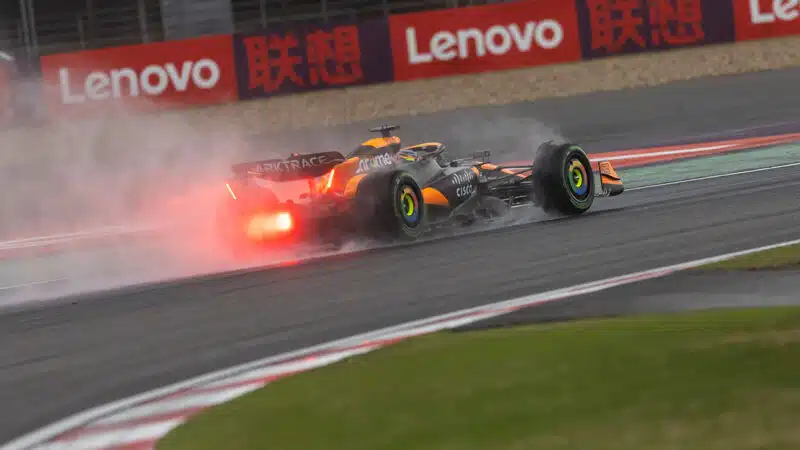
Norris took pole in wet sprint qualifying conditions
Edmund So/Eurasia Sport/Getty
But then despite the promise of that order, once the sprint unfolded and Verstappen cruised into the lead to win by 13 seconds in a short race, it was like letting the air out of a balloon. The intrigue and excitement is reduced, so heading into a grand prix with Verstappen on pole is even less interesting than normal.
I know the reality is always likely to be that the Red Bull walks off into the distance from pole at present, but you have more “What if?” topics without the sprint, which gives away many answers.
The way a normal weekend builds to a crescendo of a grand prix is totally changed over a sprint, and I really do think it can dilute the main event on some occasions. Where opinion remains split throughout the sport is whether that is worth the trade-off for the increase in competitive sessions – and often excitement – on a Friday afternoon and Saturday morning.
Alonso surely isn’t at risk of a ban
I’m still largely in favour of the penalty Fernando Alonso received in Melbourne, because it felt like he just took the art of defensive driving that bit too far in slowing on a straight and then having to speed up before the corner when trying to keep George Russell at bay.
But in my opinion it was not a huge leap from what is acceptable defending, and Alonso was just pushing the limits a bit too far compared to when he is often hugely impressive when trying to hold off other cars.
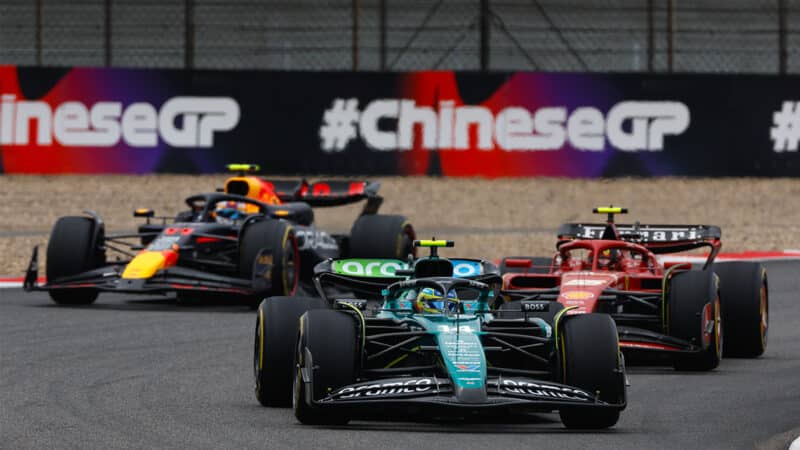
Alonso’s robust defence against Sainz earned him three penalty points
Aston Martin
In China, though, his penalty felt a bit harsh. Three penalty points for the lightest of contact with Carlos Sainz into Turn 9 is pretty severe, as it essentially ranks it as worthy of a quarter of a race ban.
Alonso does seem immune to admitting he’s in the wrong in similar situations, as he insisted he just did to Sainz what Sainz did to him – ignoring the fact that Sainz didn’t hit him at Turn 8 and nor did he run him off the road, just rightly used the inside line to his advantage – but across those two incidents he surely should not have half of the amount of penalty points required to be banned from a grand prix weekend.
The penalty points system was a good one when there was not the strict Super Licence rules that are now in place, that act as a form of quality control for the grids. It does require retaining in some form as consistent dangerous driving requires repercussions. While an argument can be made for the Melbourne incident, it surely can’t for so many points for the clash in the Sprint when 12 is the threshold.
Points become a talking point
With an F1 Commission meeting coming up before Miami a source confirmed that one of the topics on the agenda is to expand the points system down to 12th place.
The proposal would see the top seven receiving the same amount of points as currently, but then eighth receiving five points (instead of four), ninth getting four points (instead of two), tenth scoring three points (instead of one), and then 11th being awarded two points and 12th one.
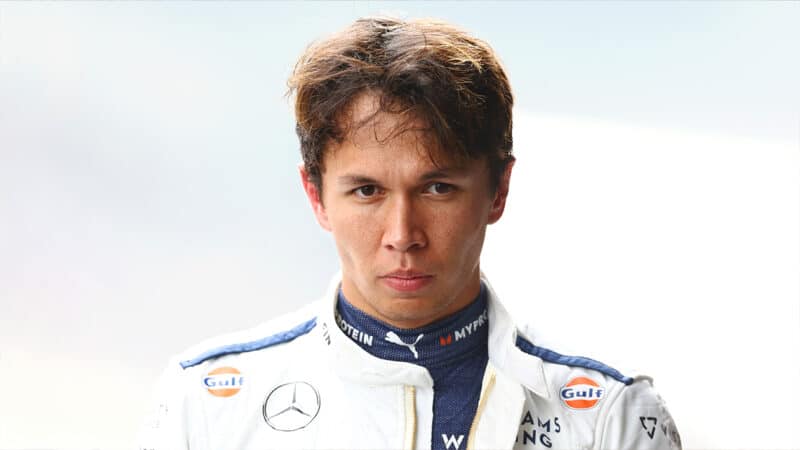
Alex Albon has two 11th-place finishes this season and was 12th in China. He’d be on five points under the proposed system, rather than having none as at present
Bryn Lennon/F1 via Getty
It does feel worth a discussion given the fact it simplifies the understanding of championship positions with more drivers and teams scoring points rather than being classified on numbers of P11 finishes for example, and all teams have scored points in six of the past eight seasons.
Plus with such a close field behind Max Verstappen, there are often great fights for what appear to be meaningless positions outside the top 10 that would have more obvious value.
Zhou’s big weekend
I couldn’t help but be impressed with Zhou Guanyu this weekend. He’s driving for a team that is really struggling in terms of pitstops but also can be up and down in competitiveness, and yet he performed excellently to reach SQ3 on Friday and finish P9 in the sprint.
It’s a shame that didn’t yield his first points of the season, because he deserved it, and it showed how well he was handling the pressure up to that point.
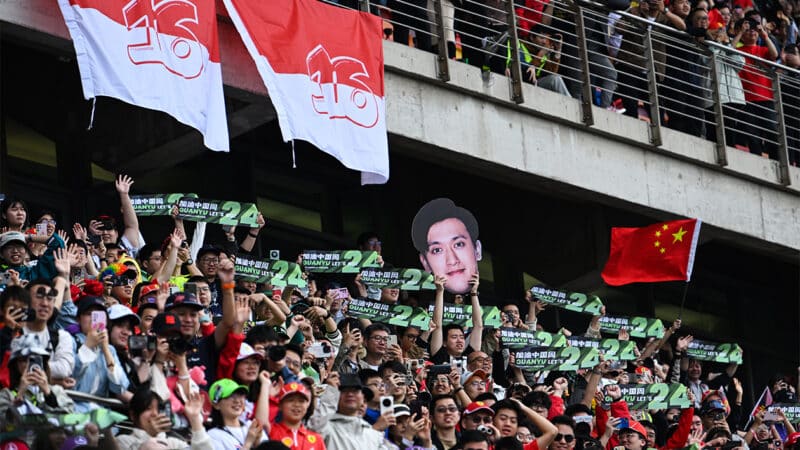
Shanghai stands were packed with Zhou fans
Mark Sutton/Sauber
Perhaps qualifying then displayed how big the pressure is, as he couldn’t replicate that form and dropped out after making a mistake at the hairpin in Q1 — as a certain seven-time world champion also did, let’s not forget — and then in the race it just didn’t come to him and his late front wing damage halted his charge.
But for every move Zhou pulled off, the crowd responded infectiously. You couldn’t help but will him on when you saw what huge support he was getting, and that support was unwavering despite the lowly position in the race.
It’s a reminder of why his promotion to F1 was such a big deal for the sport, and Zhou has proven himself to be a very solid driver at this level over the past three years.
The emotion that he allowed himself to show on the grid after the race was a sign of what the weekend has meant to him – and how much he was dreaming of a fairytale finish – but also a reminder that there’s every chance that’s his only appearance at home.
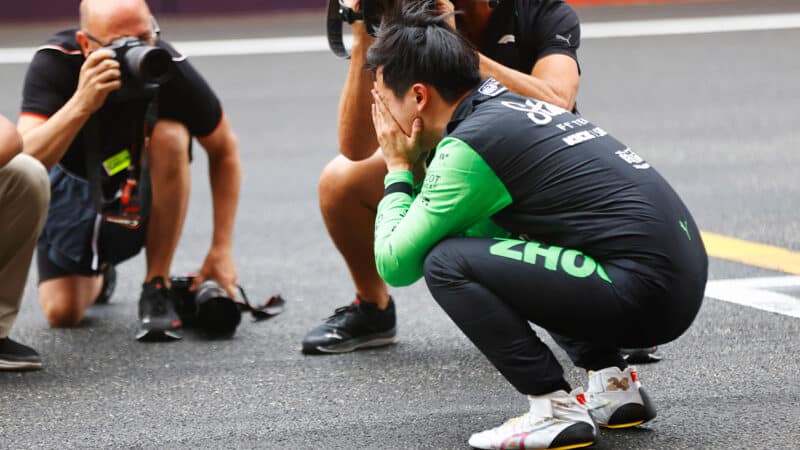
A tearful Zhou at the end of the race
Sauber
Audi is looking at Carlos Sainz but also a number of other experienced drivers, and both Zhou and Valtteri Bottas are being hampered in their attempts to shine by the current car.
Work that is currently ongoing means more grandstands are set to be open to allow a bigger capacity at next year’s edition of the Chinese GP after this year’s sold out so quickly, and I really hope Zhou secures himself a spot on the grid to be able to try and deliver points in front of that crowd again in 2025.
More rule wording woes
Try saying that subheading in a hurry… But the good old Sporting Regulations became a focal point once again on Saturday night when Aston Martin protested the results of qualifying.
In many ways, it was inevitable. A WhatsApp group I’m in with some fellow journalists saw the question raised straight after the end of Q2, regarding why Sainz was allowed to continue to take part in the session when the regs state: “Any driver whose car stops on the track during the qualifying session or the sprint shootout will not be permitted to take any further part in that session.”
There was no doubt Sainz had stopped, and while, among us, the common sense consensus in favour of his continuation was that he had not stopped permanently as a result of the crash and could return to the garage under his own power, it should have been obvious a team was going to protest.

Sainz stopped after spin but recovered to get back to the pits
Grand Prix Photo
The wording of the article in question is clear, even if its intention perhaps isn’t. There are so many areas in the rules where you have to use an interpretation or judgement, but this is one such example that can be far more easily tidied up. As it currently reads, Sainz had to be excluded, but that will similarly apply to any driver who spins and all four wheels stop rotating before they rejoin. At least common sense was used – as well as the other previous examples – even if it took over five hours after qualifying to actually get a classification.
Where the frustration lies most, though, is in the amount of time it results in a final classification being defined for fans. The FIA’s Remote Operations Centre (ROC) in Geneva should be catching these incidents – as it did with the Lando Norris deleted lap time in sprint qualifying – and issuing an explanation to the teams immediately after the session to ensure there’s no ambiguity.
